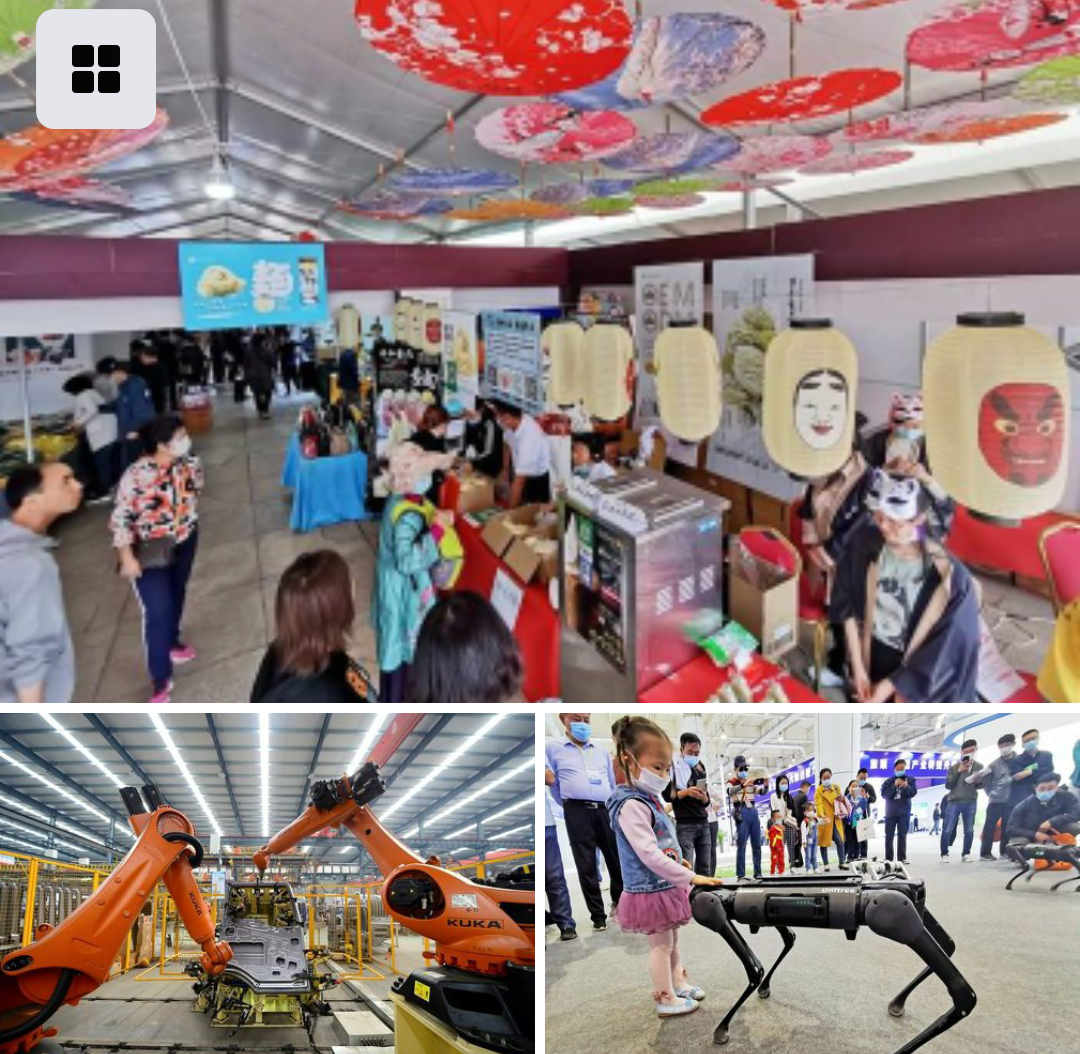
China’s tourism sector witnessed a robust rebound during the combined Mid-Autumn Festival and National Day holiday that lasted from October 1 to 8.
More than 600 million Chinese made domestic trips during the eight-day holiday, when the sales of key retail and catering firms monitored by China’s Ministry of Commerce (MOC) totaled 1.6 trillion yuan (about $239 billion), with average daily sales rising 4.9 percent compared with the National Day holiday last year, data from the MOC showed.
Such figures mirrored the strong vitality of the domestic circulation of the country.
While global tourism is estimated to suffer from a loss of over $1 trillion this year, China’s tourism industry has almost returned to normal, said an article published on Hamburger Morgenpost, a daily German newspaper.
The whole country was on the move as hundreds of millions of Chinese visited their relatives and friends or took trips to tourist destinations during the past eight-day Golden Week holiday, a scene that was seen only 9 months after the global outbreak of the COVID-19 epidemic, the article described.
Many international media outlets have also made similar comments about China recently.
China has injected dynamism into economic development by making efforts to facilitate the movement of people and goods. The experience could also be helpful for other countries.
China has speeded up creating a “dual circulation” development pattern whereby domestic and foreign markets can boost each other, with the domestic market as the mainstay.
It is a strategic decision made by the country in accordance with its development stage, environment, and conditions.
Facts have shown that China has continuously unleashed the potential of domestic demand and witnessed growing vitality of the domestic circulation. Meanwhile, international circulation has constantly gained new momentum as China has continued to expand opening-up.
China’s foreign trade rose 6 percent year on year in August, registering an increase for the fifth consecutive month.
The country has recently released a master plan for three new pilot free trade zones (FTZs) in Beijing, Hunan province and Anhui province, and adopted a plan to expand the pilot FTZ in Zhejiang province, bringing the number of its pilot FTZs to 21.
On October 11, China issued a plan on implementing pilot reforms in Shenzhen, south China’s Guangdong province, intending to develop the city into a demonstration area of socialism with Chinese characteristics in the next five years.
By granting the city with greater autonomy in the reform of important areas and key links, China aims to advance higher-level reform and opening-up towards higher goals in Shenzhen.
Although economic globalization has been struck by headwinds, the world will never return to isolation, and no one can sever the ties between countries.
“We should pursue open and inclusive development, remain committed to building an open world economy, and uphold the multilateral trading regime with the World Trade Organization as the cornerstone. We should say no to unilateralism and protectionism, and work to ensure the stable and smooth functioning of global industrial and supply chains,” said Chinese President Xi Jinping at the General Debate of the 75th session of the United Nations General Assembly.
China has made it clear to the world that its sincerity and determination to cooperate with other countries for mutual benefits and common development have always remained the same.
By promoting high-quality development through high-level opening-up, China has brought new opportunities to the common development of China and the rest of the world, thus winning wide recognition and trust from the international community.
The country has continuously shortened its negative list for foreign investment and that in pilot free trade zones and officially cleared the negative list for foreign investment in financial sector.
The 2020 China International Fair for Trade in Services (CIFTIS) has yielded rich fruits and the third China International Import Expo (CIIE) to be held in November is attracting more and more foreign enterprises.
It is widely acknowledged by the international community that joining hands with China means bright prospects for development.
It should be noted that despite the sharp decline in cross-border trade and investment, most multinational companies are still optimistic about China, and their strategy to secure long-term development in China has not changed.
From January to July, 18,838 new foreign-funded enterprises were established on the Chinese mainland, among which 415 were funded by Japanese, 860 by Americans, 849 by South Koreans, 584 by Singaporeans, 296 by British, and 245 by Germans.
About 92 percent of the respondents said that that they would continue to operate in China, according to a survey conducted by the American Chamber of Commerce in Shanghai on more than 340 member companies.
Data from the European Business in China—Business Confidence Survey 2020 launched by the European Union Chamber of Commerce in China suggest that about half of the members will invest 5 percent to 10 percent more of their annual revenue in China.
Nearly one-third will add more than 10 percent of their annual revenue to their investments in China, according to the survey.
A study carried out by the Japan Center for Economic Research (JCER) and Nikkei Inc., a Japanese company with newspaper businesses as its core, shows that nearly 70 percent of the respondents are confident in China’s robust consumer demand.
A majority of companies in semiconductor equipment and materials, as well as health care, are actually expanding Chinese production, said a Goldman Sachs report.
Bloomberg noted that as China’s financial sector opens wider, U.S. fund management companies are leading a new “gold fever” in China.
Numerous evidence has proved that international economic connectivity and exchanges are still the objective requirements of world economic growth, and the “magnetic effect” of openness and cooperation is objective existence driven by rules.
China today is more than the country itself; it is very much a part of the world. It is striving to achieve better quality, more efficient, fairer, more sustainable and safer development, which also represents the country’s efforts to promote the common development of all countries through open cooperation.
Proposing the new development pattern doesn’t mean that China will pursue development with its door closed. Instead, it will continue to open its door wider.
No matter how the international landscape changes, China, as always, will aim at achieving true common prosperity and following wide and open avenues for all countries so as to improve the common well-being of people in all countries and promote the building of a community with a shared future for mankind.
By He Yin











